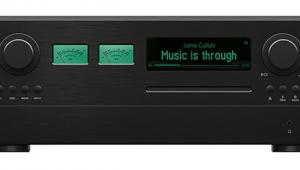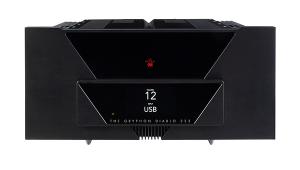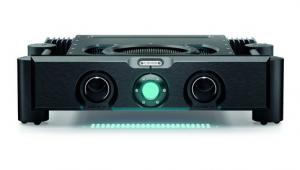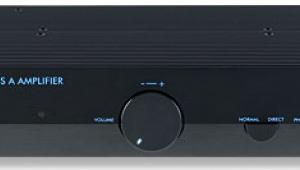Hegel H390 Integrated Amplifier/Network DAC
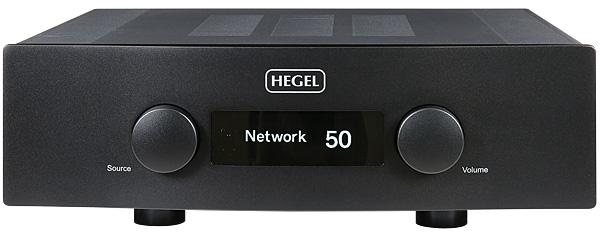
 A little over half the price of the mighty H590 amp, in a slimmer design and with very similar facilities and output, this new arrival from Norway is a sure-fire bargain
A little over half the price of the mighty H590 amp, in a slimmer design and with very similar facilities and output, this new arrival from Norway is a sure-fire bargain
They're clearly fans of the old buckled swash at Hegel: having evoked Master And Commander in announcing its £9000 H590 flagship amplifier [HFN Oct '18], the Norwegian company says it's calling the new H390 'Robin Hood'. Why? Well, it's all a matter of re-distribution of wealth, apparently, for the £4900 debutant takes much of the ability of its big brother, and makes it available to those of us of humbler means. Mind you, the company also describes the new amplifier as a 'Rebel', saying it justifies that title 'by offering so much of the performance and features from our Reference products, but at a lower price, [offering] in one integrated product what others do in two or three. It provides world class sound, jaw-dropping power, and services such as Apple AirPlay, Spotify, Roon, all in a single chassis'.
Messy Business
Think we've got the idea now, chaps – it does lots, very, very well, and it's much less expensive than your flagship model, to which it gets extremely close. Let's just hope not dangerously close, eh? That might get messy…
Launched at the 2019 High End show in Munich, the H390 replaces the H360, just as the H190 replaced Hegel's first EISA Award-winner, the H160. And it draws together elements of the H360 with technology from the H590, so while the H360-sized power supply is smaller than that in the flagship model, as PM's Lab Report and boxou make clear, you'll never actually notice any lack of power except in extremis.
What you will notice is that the H390 shares the new Hegel streaming platform as seen on the H590 and H190 amplifiers. Yes, this isn't just a common or garden integrated amp with analogue and digital inputs because the H390 is a full-blown network streaming device too. Also included in its inventory are RCA and XLR analogue ins (though no phono stage), fixed and variable analogue outs and BNC, coaxial, optical and USB-B digital inputs, with selectable volume bypass available for home theatre processors and the like.
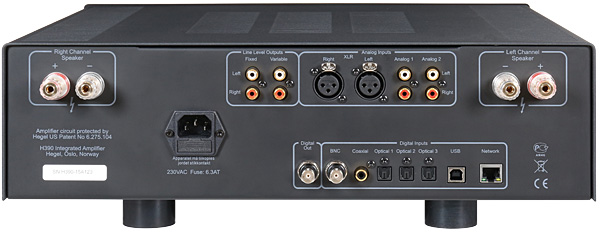
The updated network facility means you can stream using UPnP/DLNA from NAS drives, access online services including Spotify, Tidal and Internet radio, all under the control of a third-party app such as Bubble UPnP or Linn's Kinsky/Kazoo. You can even stream music wirelessly to the amp via the network using Apple AirPlay. Hegel neatly swerves the lack of a dedicated app to drive the H190/390/590 by saying this 'is a rebellion against the establishment of "forcing" consumers into a user interface defined by the amplifier/streamer manufacturer'. Rather conveniently this also saves Hegel the dosh in app development and certification, of course – but hey, this is far from the only company to follow this course.
In The Air
And there's more. In common with the H190 and H590, the new amplifier can be customised using a browser interface on a computer or tablet connected to the same network, and also receive 'over the air' firmware updates. These will allow it to be tweaked and improved over time, and also gain extra functionality. On the way, or available by the time you read this, will be AirPlay 2, Roon-ready capability and Control4 custom installation compatibility, while Hegel also says, 'We also look for updates that may further improve the sound quality over Ethernet, without going to further details just yet'.
The custom streaming platform is engineered to have processing power in hand for these new additions, and is also more stable than Hegel's first-generation streaming design. The digital section here can handle up to DSD256 on USB, up to DSD64 on all other digital inputs (using DSD over PCM frames, or DoP), and MQA on all digital inputs. Hegel says that the DAC board is based on that in the H590, but simplified – described as a 'bit perfect' DAC, it unusually treats every incoming digital signal 'as is', with synchronous clocks and none of the upsampling prevalent elsewhere.
In the quest for this purity, Hegel says, 'we even design digital clocks that will follow the sampling frequency in the music and "down-clock" when receiving a low-resolution file. The result is a far more natural and "analogue" sound as well as an unbelievable soundstage and realism'. Here's how Hegel explains what this does: 'We minimise noise, by reducing the system clock of certain circuits whenever possible. The effect this had was somewhat surprising to us, and may be "poor marketing" since it means we are reducing the computing power'.





